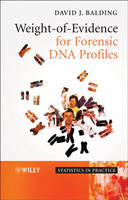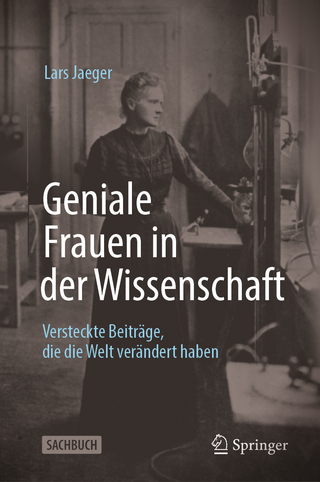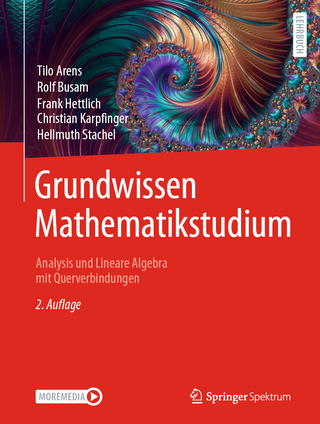
Weight-of-Evidence for Forensic DNA Profiles
John Wiley & Sons Inc (Verlag)
978-0-470-86764-8 (ISBN)
Assessing Weight-of-Evidence for DNA Profiles is an excellent introductory text to the use of statistical analysis for assessing DNA evidence. It offers practical guidance to forensic scientists with little dependence on mathematical ability as the book includes background information on statistics – including likelihood ratios – population genetics, and courtroom issues. The author, who is highly experienced in this field, has illustrated the book throughout with his own experiences as well as providing a theoretical underpinning to the subject. It is an ideal choice for forensic scientists and lawyers, as well as statisticians and population geneticists with an interest in forensic science and DNA.
Editors: D. J. Balding, Imperial College of Science, Technology and Medicine, London, UK M. Bishop, UK HGMP Resource Centre, Cambridge, UK C. Cannings, University of Sheffield, UK
Preface xi
1 Introduction 1
1.1 Weight-of-evidence theory 1
1.2 About the book 3
1.3 DNA profiling technology 3
1.4 What you need to know already 4
1.5 Other resources 5
2 Crime on an island 7
2.1 Warm-up examples 7
2.1.1 Disease testing: Positive Predictive Value (PPV) 7
2.1.2 Coloured taxis 9
2.2 Rare trait identification evidence 10
2.2.1 The “island” problem 10
2.2.2 A first lesson from the island problem 11
2.3 Making the island problem more realistic 13
2.3.1 Uncertainty about p 14
2.3.2 Uncertainty about N 15
2.3.3 Possible typing errors 15
2.3.4 Searches 17
2.3.5 Other evidence 18
2.3.6 Relatives and population subdivision 19
2.4 Weight-of-evidence exercises 20
3 Assessing evidence via likelihood ratios 22
3.1 Likelihood ratios 22
3.2 The weight-of-evidence formula 24
3.2.1 Application to the island problem 25
3.2.2 The population P 25
3.3 General application of the formula 27
3.3.1 Several items of evidence 27
3.3.2 Assessing all the evidence 29
3.3.3 The role of the expert witness 30
3.4 Consequences for DNA evidence 31
3.4.1 Many possible culprits 31
3.4.2 Incorporating the non-DNA evidence 31
3.4.3 Relatives 33
3.4.4 Laboratory and handling errors 34
3.4.5 Database searches 35
3.5 Some derivations † 36
3.5.1 Bayes theorem for identification evidence 37
3.5.2 Uncertainty about p and N 38
3.5.3 Grouping the alternative possible culprits 39
3.5.4 Typing errors 40
3.6 Further weight-of-evidence exercises 40
4 Typing technologies 43
4.1 STR typing 44
4.1.1 Anomalies 46
4.1.2 Contamination 49
4.1.3 Low copy number (LCN) profiling 50
4.2 mtDNA typing 50
4.3 Y-chromosome markers 51
4.4 X-chromosome markers † 52
4.5 SNP profiles 53
4.6 Fingerprints † 54
5 Some population genetics for DNA evidence 56
5.1 A brief overview 56
5.1.1 Drift 56
5.1.2 Mutation 59
5.1.3 Migration 60
5.1.4 Selection 60
5.2 θ, or FST 62
5.3 A statistical model and sampling formula 63
5.3.1 Diallelic loci 63
5.3.2 Multi-allelic loci 68
5.4 Hardy–Weinberg equilibrium 69
5.4.1 Testing for deviations from HWE † 70
5.4.2 Interpretation of test results 74
5.5 Linkage equilibrium 75
5.6 Coancestry † 77
5.7 Likelihood-based estimation of θ † 79
5.8 Population genetics exercises 81
6 Identification 82
6.1 Choosing the hypotheses 82
6.1.1 Post-data equivalence of hypotheses 84
6.2 Calculating likelihood ratios 85
6.2.1 The match probability 85
6.2.2 One locus 87
6.2.3 Multiple loci: the “product rule” 89
6.2.4 Relatives of s 90
6.2.5 Confidence limits † 92
6.2.6 Other profiled individuals 93
6.3 Application to STR profiles 94
6.3.1 Values for the pj 95
6.3.2 The value of θ 96
6.3.3 Errors 98
6.4 Application to haploid profiles 99
6.4.1 mtDNA profiles 99
6.4.2 Y-chromosome markers 101
6.5 Mixtures 101
6.5.1 Visual interpretation of mixed profiles 101
6.5.2 Likelihood ratios under qualitative interpretation 103
6.5.3 Quantitative interpretation of mixtures 108
6.6 Identification exercises 109
7 Relatedness 111
7.1 Paternity 111
7.1.1 Weight of evidence for paternity 111
7.1.2 Prior probabilities 112
7.1.3 Calculating likelihood ratios 113
7.1.4 Multiple loci: the effect of linkage 117
7.1.5 s may be related to c but is not the father 119
7.1.6 Incest 120
7.1.7 Mother unavailable 121
7.1.8 Mutation 122
7.2 Other relatedness between two individuals 126
7.2.1 Only the two individuals profiled 126
7.2.2 Profiled individual close relative of target 127
7.2.3 Profiles of known relatives also available † 128
7.3 Software for relatedness analyses 129
7.4 Inference of ethnicity or phenotype † 131
7.5 Relatedness exercises 133
8 Other approaches to weight of evidence 135
8.1 Uniqueness 135
8.1.1 Analysis 136
8.1.2 Discussion 138
8.2 Inclusion/exclusion probabilities 138
8.2.1 Random man 138
8.2.2 Inclusion probability of a typing system 139
8.2.3 Case-specific inclusion probability 139
8.3 Hypothesis testing † 141
8.4 Other exercises 143
9 Issues for the courtroom 145
9.1 Bayesian reasoning in court 145
9.2 Some fallacies 146
9.2.1 The prosecutor’s fallacy 146
9.2.2 The defendant’s fallacy 147
9.2.3 The uniqueness fallacy 148
9.3 Some UK appeal cases 148
9.3.1 Deen (1993) 148
9.3.2 Dalby (1995) 149
9.3.3 Adams (1996) 149
9.3.4 Doheny/Adams (1996) 151
9.3.5 Watters (2000) 153
9.4 US National Research Council reports 154
9.5 Prosecutor’s fallacy exercises 155
10 Solutions to exercises 157
Bibliography 175
Index 183
| Erscheint lt. Verlag | 1.3.2005 |
|---|---|
| Reihe/Serie | Statistics in Practice |
| Verlagsort | New York |
| Sprache | englisch |
| Maße | 157 x 214 mm |
| Gewicht | 425 g |
| Themenwelt | Mathematik / Informatik ► Mathematik |
| ISBN-10 | 0-470-86764-7 / 0470867647 |
| ISBN-13 | 978-0-470-86764-8 / 9780470867648 |
| Zustand | Neuware |
| Informationen gemäß Produktsicherheitsverordnung (GPSR) | |
| Haben Sie eine Frage zum Produkt? |
aus dem Bereich



